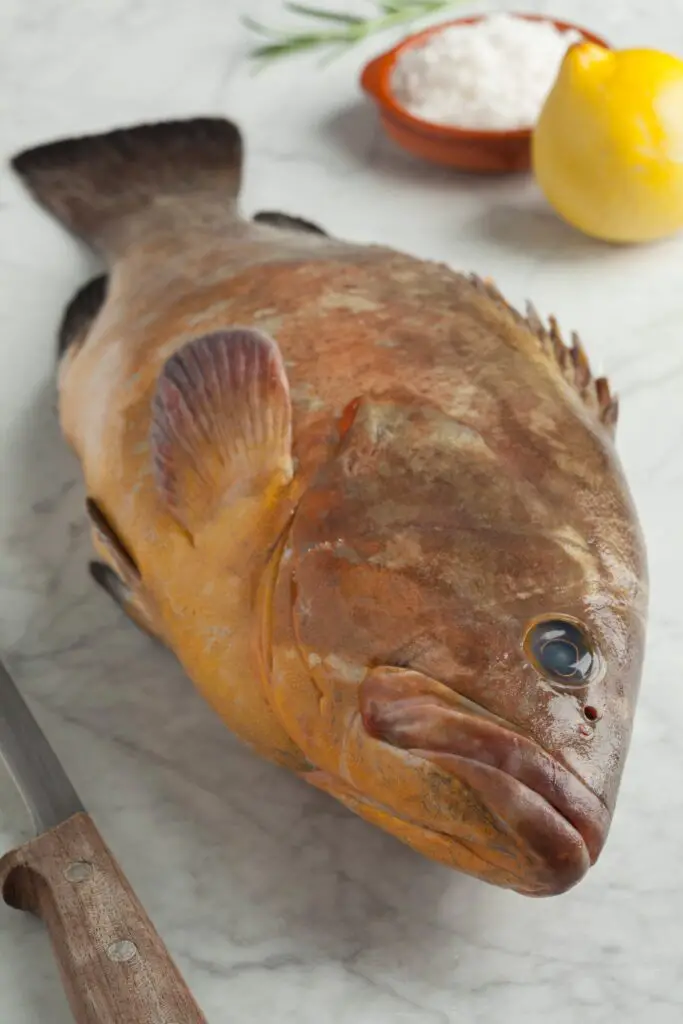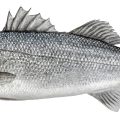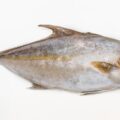Mero is a Spanish word for grouper, which are from the Serranidae family. Groupers and Meros are the same thing, but different words from different languages. There are almost 400 kinds of groupers from this Serranidae family. It was called jewfish, goliath grouper, and toothfish. There are other various names for groupers, like hamlet, back bass, etc.
Hyperion, Cromileptes, Dermatolepis, Graciela, Salopti, and Triso are all types of groupers. They are closely related to the sea bass family. Mero’s are predatory fish with large mouths, but scientists say they should not be called toothfish. They do not have many teeth, but they do have teeth. They usually swallow their prey, and usually do not bite. They eat octopuses, turtles, and shrimp. They are hermaphroditic, which means they produce eggs and sperm at the same time. They are born female but become male later.
In early 2001, the jewfish was called Mero, but then the American Fisheries Society named it Goliath grouper. The American Fisheries Society tries to rename the fish after any new research and findings about the fish. They also try to protect the groupers from overfishing.
It is available on the coasts of Brazil, the USA, Florida, and the Caribbean. Mero lives in the Pacific Ocean, and the Atlantic Ocean looks alike but is not the same in character. There is no difference between Mero and Grouper. Both are the same, but there are quite different types of groupers available on the market and in the sea, so there are lots of names and lots of confusion.
Is Dusky Grouper like Mero?
There are several types of groupers. Among them, the dusky grouper is similar, which is called Mero in Spain and Garoupa in Brazil. They are usually large in size and have very big mouths. They love to live in the rocky water where there are so many caves and covers. They are shy in nature and like to live in covered places, but dusky groupers are the least shy of all groupers. They will hide in a cave, then if they get their desired prey, they jump in front of it and suck it up.
Fishermen like to go after grouper because of its sweet flavor which makes it a very popular at the lunch table. It is a slow-growing fish which is making it rarer in the ocean. Governments are imposing limits on when they can be fished for and if you can keep them to try to protect these fish. This fish plays an important part in the ecosystem. They eat small and medium fish, which balances the ecosystem’s food chain.

Are Mero Sea Bass and Grouper the Same?
Grouper has a wide variety which can be confusing. Over the years, the name of the fish has changed frequently. People usually get confused when they ask for a grouper sandwich. You don’t even know which one type of grouper you are going to get. The black grouper is the tastiest of all. People usually expect a black grouper in their sandwich due to the amount of them which are normally caught too.
Mero Sea bass and grouper are both from the Serranidae family and subfamily Epinephelnae, in the order Perciformes. All Serranidae are not called groupers. The Serranidae family has 34 types of sea bass also. Both are popular all over the world. Its meat is mildly sweet and flaky, like lobster. However, the taste is like sea bass and not the taste of lobster.
In Japan, grouper is called “Mero sea bass.” The Japanese people love Mero as much as they love tuna, which causes the price of grouper to stay high in most places around the world. It is extremely popular in Japa. The Mero sea bass is very oily, and the meat is very moist.
In China, grouper is also exceedingly popular. There is a fish called Chinese sea bass, which is similar to grouper. They eat Chinese sea bass in many ways. Their recipe and the Japanese recipe are not the same, however. They like to have it in a spicy way. In China, the demand for sea fish is increasing day by day. As the economy is growing, their interest in seafood is also increasing. Worldwide, the demand for grouper stays at a higher level. The taste is not the same from the Atlantic to the Pacific for several types of groupers. The grouper available in Japan is oilier than the grouper found in Florida.
Are Black Sea Bass and Grouper similar?
Black sea bass is also from the Serranidae family. They are found in the eastern Gulf of Mexico. They are found in both inshore and offshore areas of water. They love to spend time on the rocky beach. They usually spend their time on the seafloor, jetties, and piers. They are very shy in nature and love hiding in caves under the sea.
The black sea bass can be brown or black in color. They have a white stripe over the black body on the fin. Large male groupers can also be blue. They have ebony markings on their bodies, while the female ones can have different markings than the males.
Groupers have vertical bars, and their mouths are large. They open their mouths and can create suction in their mouths and suck their prey. They love to eat shrimp and turtles. The grouper starts their life as a female, but they become male later in life. Black sea bass is also the same as this. In this way they are similar, but their looks are not similar. Groupers normally have large asymmetrical body types which are distinctive from the black sea basses more torpedo shaped body type many think of when a fish comes to mind. The bass family is the grouper family and is quite related.
Finally, there are similarities between the grouper and black sea bass. The grouper is a large family of fish, and sea bass fall in their family. Even without fish expertise you would normally not mistake a black sea bass for a grouper.











